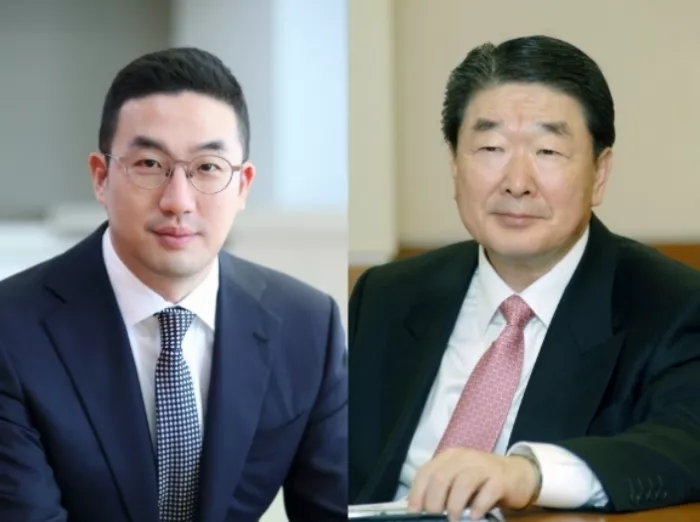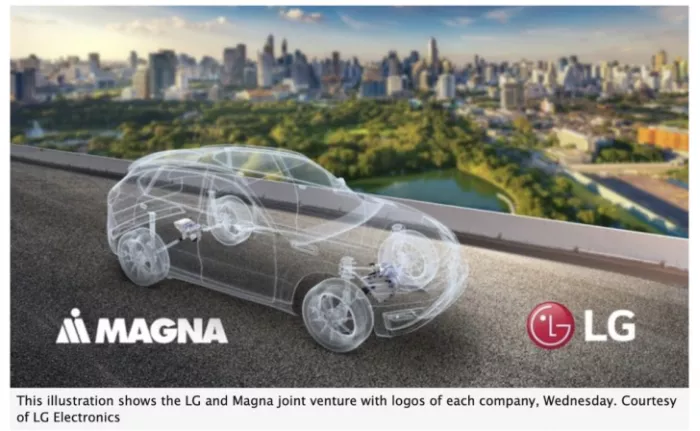In 1999, in response to the IMF Crisis, under the leadership of the South Korean government, LG, which was the second largest consortium in South Korea after Samsung, sold its subsidiary LG semiconductor to Hyundai Electronics, a subsidiary of Hyundai Group. This is the last time LG put its name together with "semiconductor". For more than 20 years, LG undertook the important task of the development of energy, display and other industries in South Korea as expected by the South Korean government, but it was false to say that it was indifferent to the missed semiconductor dream.
In particular, Samsung, a former competitor, has grown into a global memory leader, and SK Hynix, born out of the joint venture between LG semiconductor and Hyundai Electronics, has become another force supporting Korean semiconductor besides Samsung.
In 2018, the third generation leader of LG, Ju Benmao, died, which opened the prelude to the return of LG semiconductor. In 2021, the brother of Benmao and the close uncle of the current leader, youguangmo, took silicon works, the only semiconductor subsidiary of LG, to spin off and establish LX group. LG Electronics stayed in the group and began the self production plan of automobile chips. At the moment of competition, can LG, which strides forward in two ways, regain what it has lost?

LG's fourth generation leader has Guangmo and his uncle has Benjun; Source: the Korea Herald
Revisit the old dream: my uncle and the only semiconductor company stand on their own
In May 2021, LG international, LG hausys, silicon works, LG MMA, pantos and other five LG subsidiaries were officially split from LG into LX group, which will be chaired by Takemoto, who has served as the leader of LG semiconductor and LG display respectively. Since the death of the previous generation leader Takemoto in May 2018, LG's long rumored spin off has finally settled.

Yoshimoto and five subsidiaries were split to establish LX group; Source: businesskorea
At this time, it is in the third year of LG's fourth generation leader Ju Guangmo's tenure. For spectators who are used to watching the drama of the struggle of the chaebol in South Korea, the act of letting their own uncle and his subsidiaries spin off and establish a new company has more or less the meaning of "drinking wine to release military power". The decisive role of Ben Jun himself in the development of LG display business and his soul position in the group provide evidence for this speculation.
However, unlike other chaebols, LG, which reportedly pursues Confucianism such as "human harmony" and strictly implements the eldest son inheritance system, has been peaceful in every previous generation of leaders, and this renewal is no exception. Since youguangmo took office in 2018, youbenjun, who plays an important role in the group, has begun to retreat to the second tier. Although there are frequent rumors of spin off, there has been no disaster.
For Yoshimoto, who has entered the age of seventy, it is expected to launch an impact on his "original heart" again. In 1985, Yoshimoto joined LG semiconductor and started his family business. From the background of national investment in semiconductor in South Korea at that time, it was a good choice. However, 14 years later, Yoshimoto, who has become the head of LG semiconductor, handed it over to others. The bitter taste is unimaginable.
Although after that, with Benjun's outstanding business talent and courage, it almost pushed LG display to the position of industrial hegemony. Now it monopolizes the large-scale OLED production capacity, and even Samsung has to retreat from the edge. However, whether it is Takemoto himself or LG, the ambition for semiconductors has never really been extinguished. In 2014, LG completed the acquisition of silicon works, the leader of IC Design in South Korea, which is proof.
In fact, silicon works has a deep relationship with LG. It was founded in the same year that LG semiconductor was sold to Hyundai with the support of distant relatives of Takemoto's father, Ju Ziyu. After the acquisition in 2014, on the one hand, DDIC, the main product of silicon works, cooperated with the panel products of LG display, and the vertical integration of the industrial chain was deepened. On the other hand, silicon works assumed more of LG's semiconductor business.
Before it was officially divided into LX group, LG had consciously sorted out its rather messy business, and centralized management of semiconductor business was one of its core tasks. On the eve of the death of the third generation leader Takemoto, LG Electronics decided to hand over the design of OLED TCON chips to silicon works. Earlier, the mass production and sales rights of the main products of SiC center under LG Electronics CTO have also been transferred to silicon works.
Leaving LG, Yoshimoto obviously got rid of the burden of connecting the family and showed his strength. In the only one year since the establishment of LX group, LG Innotek first collected 76 relevant patents registered in South Korea and the United States, including semiconductor manufacturing, and began to recruit researchers for the development of silicon carbide and gallium nitride chips. Last month, it was also reported that it would acquire magnachip, the second largest DDIC supplier that failed to acquire Zhilu capital.
Breaking up parts into whole: seeking a car with a core and looking forward to taking another Apple East wind
Back to LG itself, just like the previous decision to stop the mobile phone business and promote the spin off and listing of LG Chemical (now LG energy solutions), from the drastic changes to the group's business since youguangmo took office, this spin off has implemented the "selection and concentration" strategy implemented since he took office. The official saying is, The divested business "has high growth potential, but has not received strategic attention within the group".
So, does this mean that LG has completely abandoned its semiconductor career to LX group? Judging from LG's current overall layout and advantageous projects, this inference has a certain basis. After all, LG has retained LG display, LG Electronics and LG energy solutions, respectively corresponding to the display industry, auto parts industry, power battery and other chemical material industries, and the relationship with semiconductors has become thinner after this split.
However, judging from LG's recent actions, LG not only has ambitions for semiconductors, but also needs to be a vehicle specification semiconductor with the highest reliability requirements. Last December, Korean media reported that LG Electronics began to develop MCU for vehicles and is expected to produce MCU products within 1-2 years. Then less than half a year later, its ECU, MCU and PMIC have obtained the ISO 26262 certification of t Ü V in Rhine, Germany, and the preparation work is not enough.
Another rumor to be verified is that LG rejected the request to transfer the personnel and assets of LG Electronics's system integration chip center to LX semiconductor (now silicon works under LX group) in the second half of 2021 because it believed that it was necessary to maintain the competitiveness of the semiconductor field in order to cultivate future undertakings such as autonomous driving and metauniverse, which was quite different from the previous attitude of generous transfer of the semiconductor industry.
For the change of LG's attitude, some insiders told the author that this may be because LG is keen on the future market of vehicle specification chips, especially new energy and intelligence. The consumption of vehicle chips is much greater than that of traditional fuel vehicles. "(LG's) foundation must be there. As long as they have their own production capacity, they can still help them iterate their products as soon as possible, and there are still some opportunities to occupy a certain share of Korean made cars."
Another judgment is that the self-developed vehicle specification MCU is LG's helpless move under the shortage of car cores . From the general direction of the group's development, electric vehicles will be an important growth engine in the future. Its LG energy solution has become the world's first power battery supplier, while LG Electronics has been entrenched in the auto parts market for a long time. Last July, it established "LG Magna e-powertrain" company with top3 Tier1 magna.

Source: appleworld
Throughout the shortage of car cores up to now, the "tragedy" of blocked vehicle shipment due to the lack of a chip continues to occur, which makes the trend of auto parts supply emphasized again and again. The top tier 1, including Bosch, is actively expanding its chip production capacity. Although LG Electronics has occupied a certain share in the spare parts market, compared with the top suppliers, the queuing priority of OEM and IDM production capacity is not enough, which is more affected by the lack of core.
From this point of view, LG core is still the automobile market. In addition, it was previously rumored that after Hyundai failed to negotiate with apple, the joint venture between LG and Magna is expected to become the vehicle manufacturer of Apple car. If it has the ability of self-developed vehicle MCU, it must also increase the chips for LG to win Apple orders. As a former iPhone On behalf of the factory, it is interesting to see whether LG can borrow apple to ride the east wind of electric vehicles.
Write at the end
In the 1950s, the first radio produced by Goldstar, the predecessor of LG Chemical, was regarded as the starting point of Korean semiconductor. Today, looking down on the Korean semiconductor industry, we can say that we only hear Samsung and SK, but we can't see LG. However, tracing back the development process of important companies leading the Korean semiconductor industry, we can often easily find the traces left by LG:
In addition to sk Hynix, which was born out of Hynix Semiconductor (i.e. the company formed by the merger of LG semiconductor and modern electronics), SK silon, a large silicon wafer factory under SK's name, has also been acquired from LG (formerly LG silon). Magnachip was formerly the system integrated circuit business of Hynix semiconductor, and its mature process agent factory key foundry has also been acquired by SK before
Like this, it is sad to think of the ups and downs of LG in the semiconductor industry. With the advent of the era of automotive electric intelligence, can LG catch up with the forced car again? Different from the memory market once won by relying on national investment, the barrier of automobile chip can not be broken by large-scale investment. Whether this is a good track for LG to start again remains to be seen. (checked by / indrich)